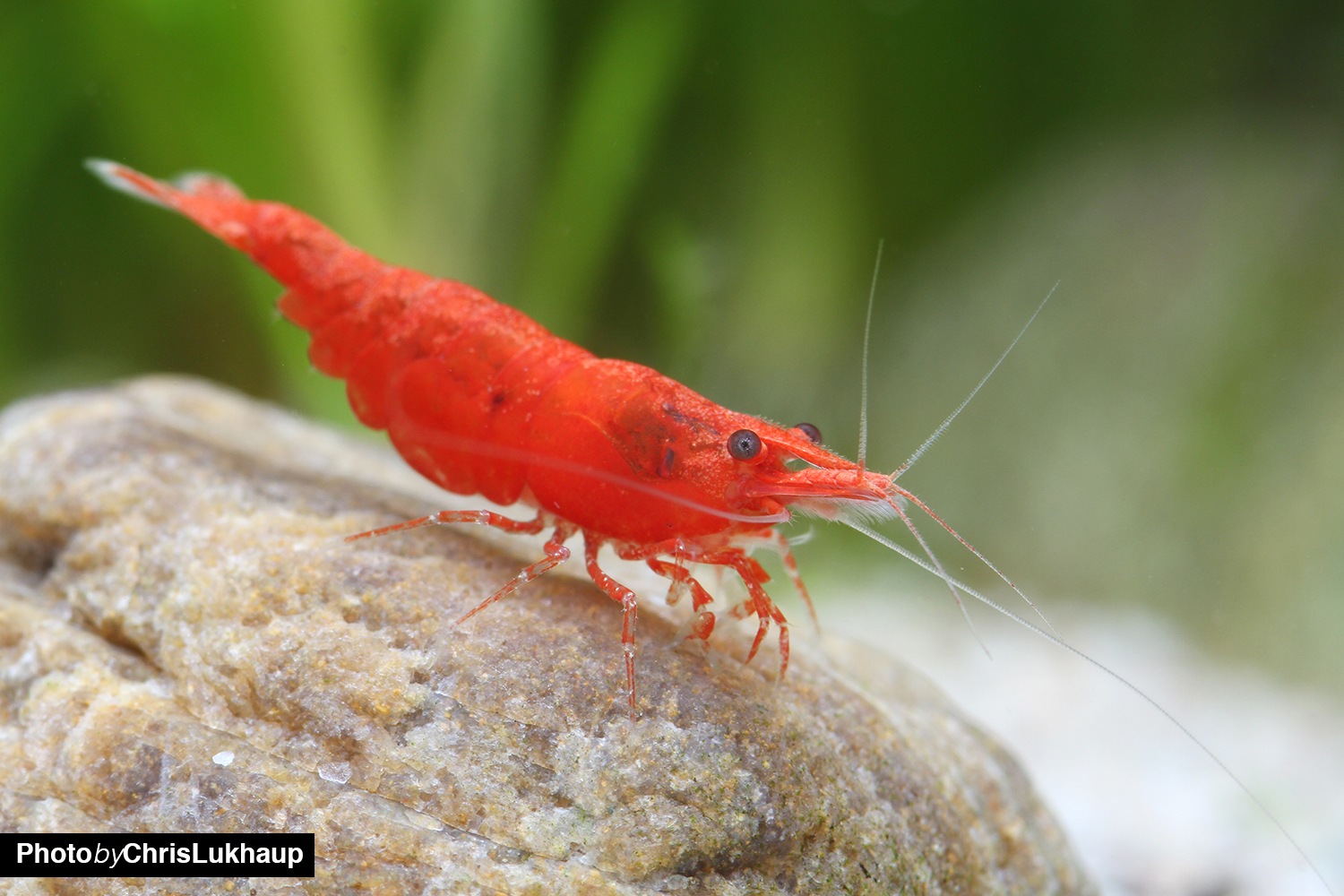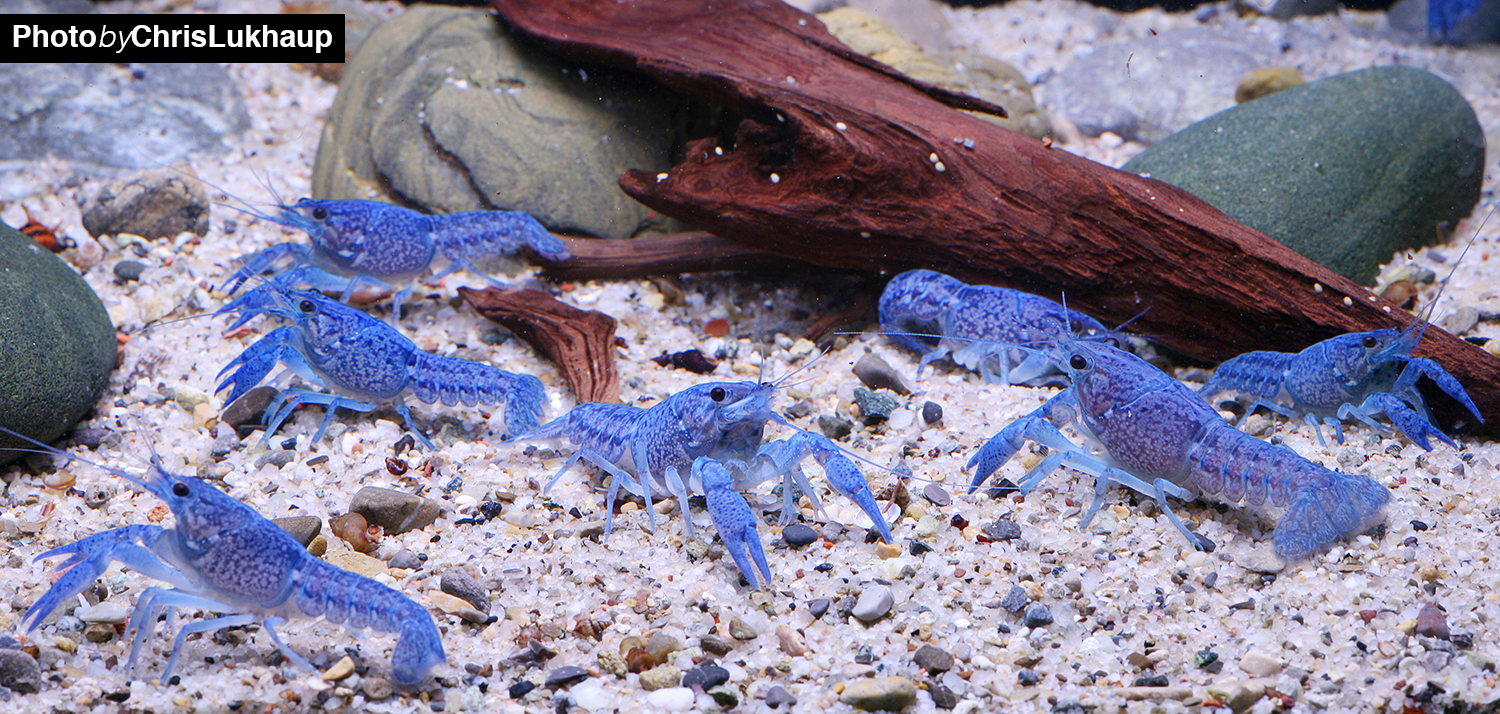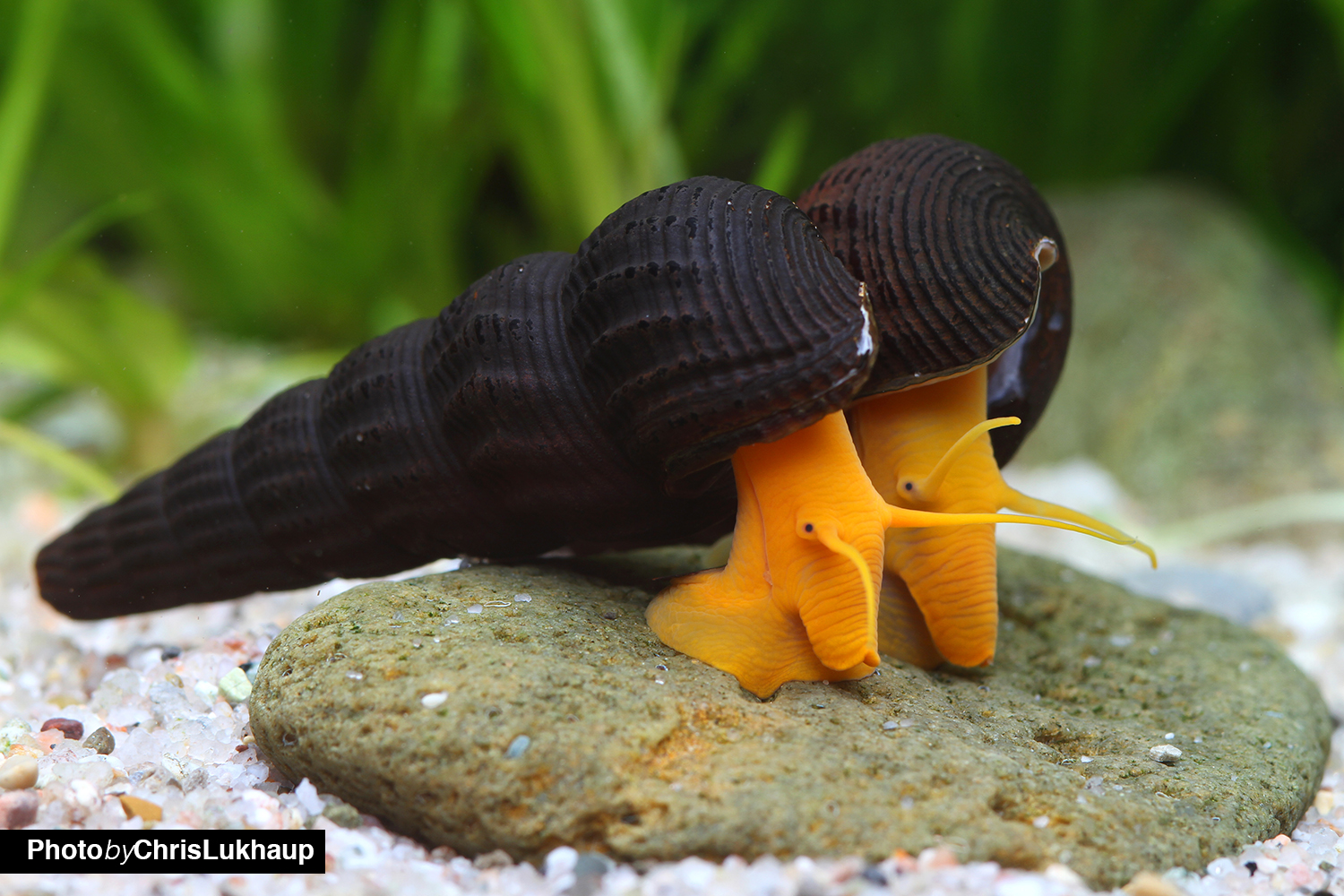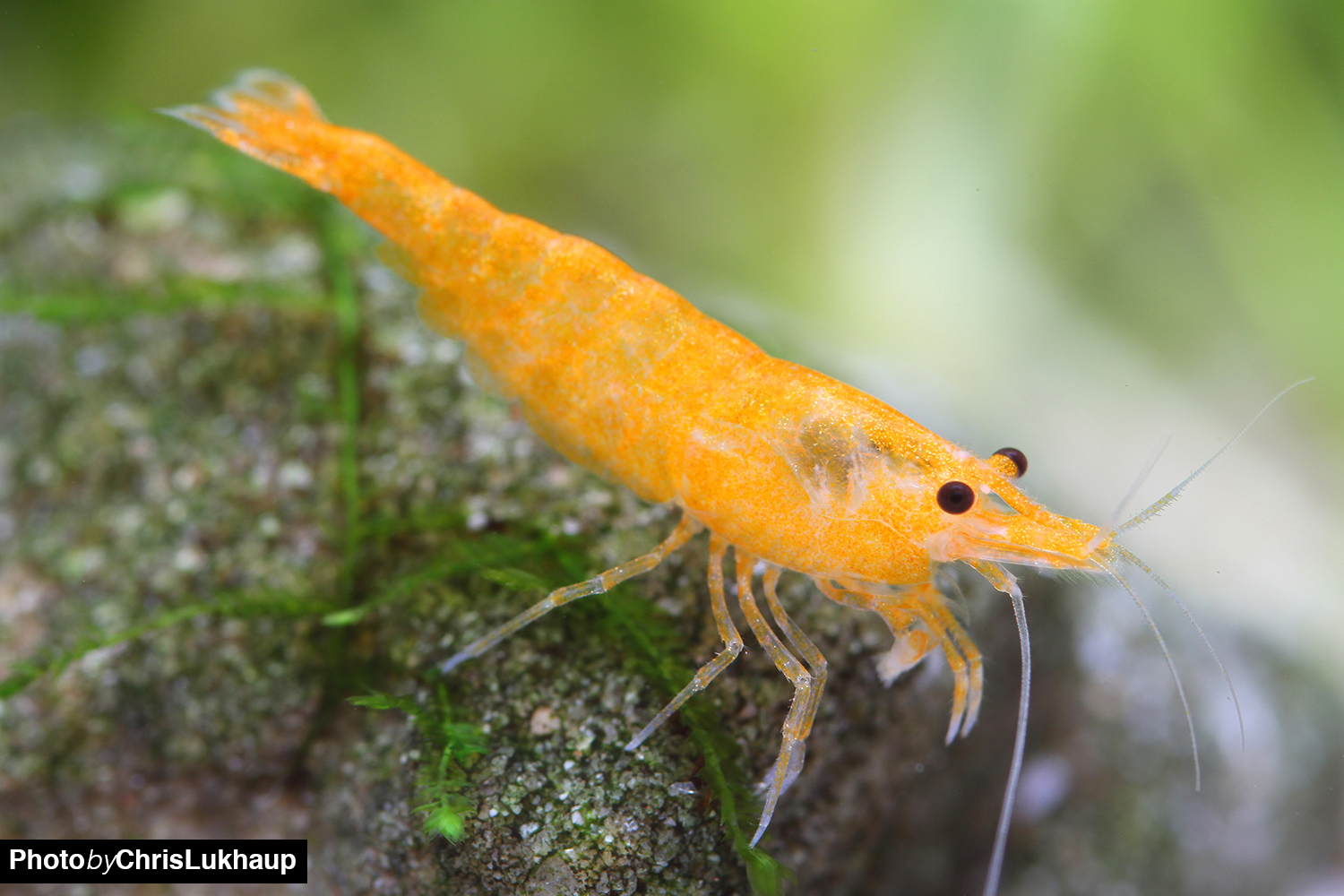Invertebrate aquarium water change
Water change in the invertebrate aquarium
In the aquarium, metabolic end products are excreted by the animals, which can be harmful in the long term or in higher concentrations. Also uneaten food or rotting plant remains or even dead animals have a negative effect on the water values.

Fresh water as a miracle cure
Not for nothing is there the saying, "The best filter is the bucket for water changes!". By changing water with clean, high-quality water, you can very quickly dilute harmful concentrations of, for example, nitrate, nitrite, ammonia, phosphate or other pollutants. A spirited water change of 80 to 100% has saved the life of many a shrimp after the introduction of new plants still containing pesticides! Also in case of a disease in the aquarium or a parasite infestation, the pathogen density is often decisively reduced by water changes. A treatment recommended by the University of Veterinary Medicine Hannover for bacterial diseases in shrimps is based on daily water changes of 80% for one week. It should be noted that the water should be adjusted to the values in the aquarium (GH, KH and conductivity), so that the animals do not come unnecessarily in stress. In these exceptional cases there is no way around generous water changes.

Regular water changes? There are many ways to Rome!
Nevertheless, the topic "regular water changes" divides the minds as hardly in the aquaristics. In practice, water is changed in so many different ways - and in most cases the aquariums concerned run well to very well - that it is almost impossible to make a recommendation. One person changes 10% weekly, another 50%, yet another replaces the same amount of aquarium water with fresh water once a month. Still other aquarists run old-water aquariums that are filled for years only with rainwater, osmosis water or demineralized water. The other extreme are weekly water changes of 80% of the water and more - and all these aquarists are to some extent right with their methods, because they have proven themselves in the respective aquaristic practice.
Understand the context!
So the water change must always be seen in connection with all other factors in the aquarium. In a heavily stocked aquarium with higher temperatures and good feeding, there is naturally more waste material that can provide food for harmful bacteria or directly harm the animals in the aquarium than in a cold water aquarium that is sparsely stocked and also not fed as much. Plantless aquariums tolerate less food than planted tanks because the substances excreted by the shrimp, crabs, snails and fish in turn provide valuable fertilizer for the plants. But beware, plants can only metabolize these substances (such as nitrate or phosphate) properly if they have sufficient light and CO2 available! A regularly performed water test brings clarity in this case.

Our tips for water changes!
As a rule, beginners are advised to do a weekly water change of 20 to 50%. In principle, you can not do much wrong with this. However, you should always make sure that the fresh water corresponds to the values that can be measured in the aquarium. Especially the total hardness (GH), the carbonate hardness (KH) and the conductivity are to be mentioned here. Tap water must be absolutely free of chlorine. To achieve this, the water is filled into a bucket via a shower head, for example from the shower hose. The strong water movement expels gaseous chlorine. Water that has stood in pipes overnight can also contain all kinds of unpleasant substances. Changing water for the aquarium is therefore best done after showering (or you can catch the water that runs off and use it for watering flowers). Changing water with too cold water can stress the animals in the aquarium and lead to the dangerous gas bubble disease. Therefore, it is recommended to let the bucket with the changing water come to room temperature overnight if the tap water should be very cold. Basically, you should not use warm tap water - potential pollutants dissolve much better in warm water!
If you want to treat the water, do it before filling it into the aquarium. Water conditioners, hardening salts or humic substances can thus already dissolve in the changing water, which is stress-free for the animals in the aquarium.
One often hears the advice to briefly squeeze out filter sponges in the changing water - of course, this does not mean the fresh water, but the water taken from the aquarium, which is then poured away or used for watering flowers.


Sehr schön geschrieben
Ich finde ganz besonders den letzten Satz wichtig. Denn ich weiss von glaube 10 Neulingen im Garni-Bereich, dass das immer SEHR verwirrend geschrieben wird. Da man ja auch immer liest, dass die Filterschwämme viel gutes Futter in sich tragen. Also denkt man als Anfänger, dass dies erhalten bleiben soll :-)
Was man auch vielleicht noch erwähnen sollte, dass gerade beim Wasserwechsel, es sich anbietet, ab und zu mit dem Boden-Sauger, ein paar Stellen die wie, um den Futterplatz, man damit gleich absaugen kann, und so wieder ein etwas mehr gereinigtes Becken hat. So ist der Wasserwechsel gleich 2x gut.
Ausserdem ist das entnommene Wasser jedenfalls bei uns, DAS Pflanzenwunder für unsere Zimmerpflanzen. Seit wir das Wasser vom Wasserwechsel gießen, erwachen auch die bis dahin unansehnlichsten Pflanzen zur neuen Pracht!
Aufschlussreich und sehr verständlich geschrieben!
Ich bin mir mit dem Teilwasserwechsel in meinen Wirbellosen-Aquarium immer unsicher, geradezu hin- und hergerissen. Man hört, wie von Euch treffend beschrieben, unterschiedliche Meinungen, die aus den jeweiligen Erfahrungen der einzelnen Aquarianer stammen. Ich selbst habe mit meinem 110L-Becken alle zwei Wochen einen Teilwasserwechsel durchgeführt. Jetzt schwänke ich auf einen Vier-Wochen-Rhythmus um, da ich vor kurzem vom Innen- auf einen Außenfilter umgesprungen bin (690 Liter Wasserwechsel pro Stunde mit einem Vier-Kammer-Filterungssystem, bestehend aus Aktivkohle, Biogranulat, Keramikröhren und Filterwatte und Kohlefilter).
Lange Rede, kurzer Sinn: DANKE, liebes Garnelio-Team, für Euren aufschlussreichen und tollen Beitrag!